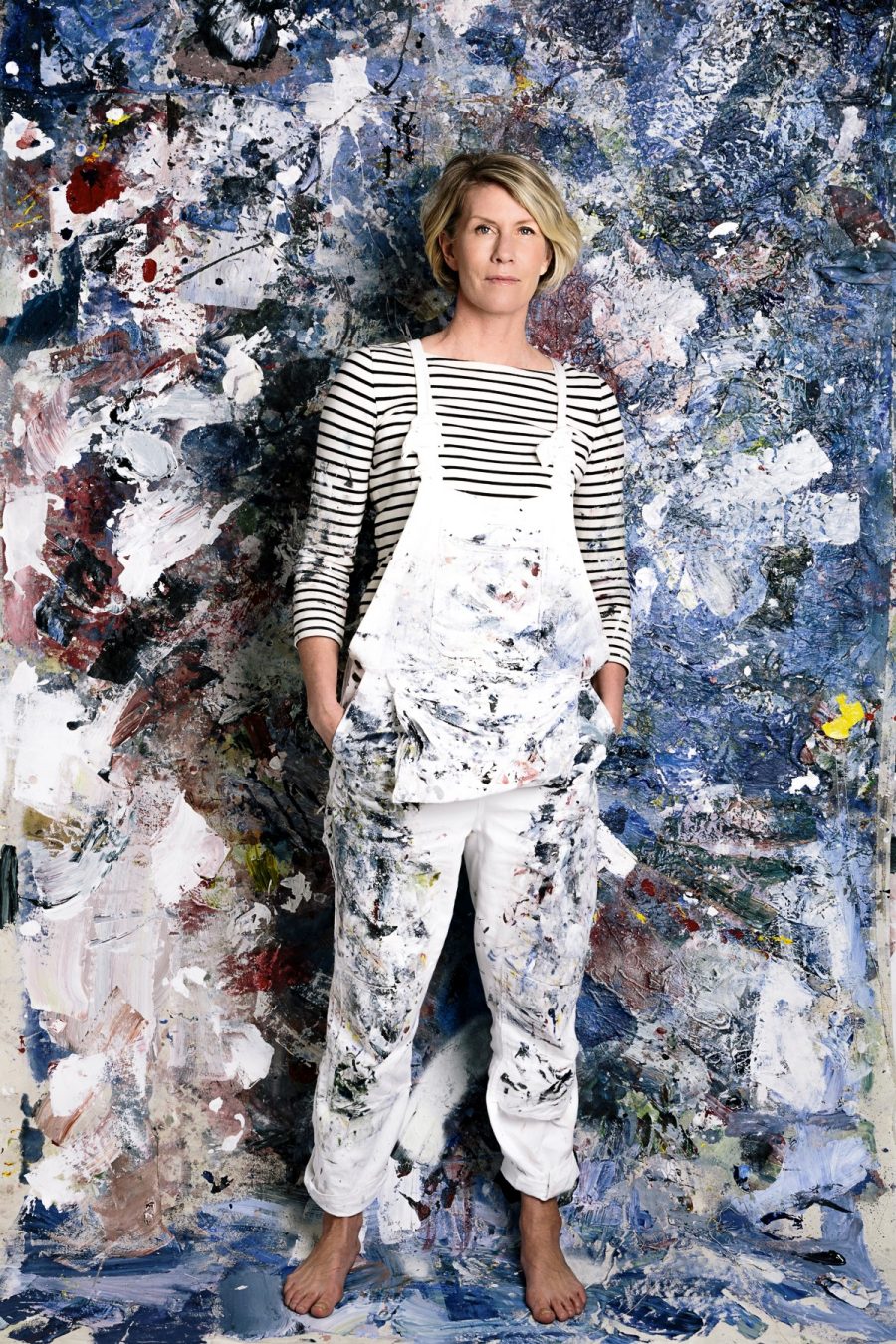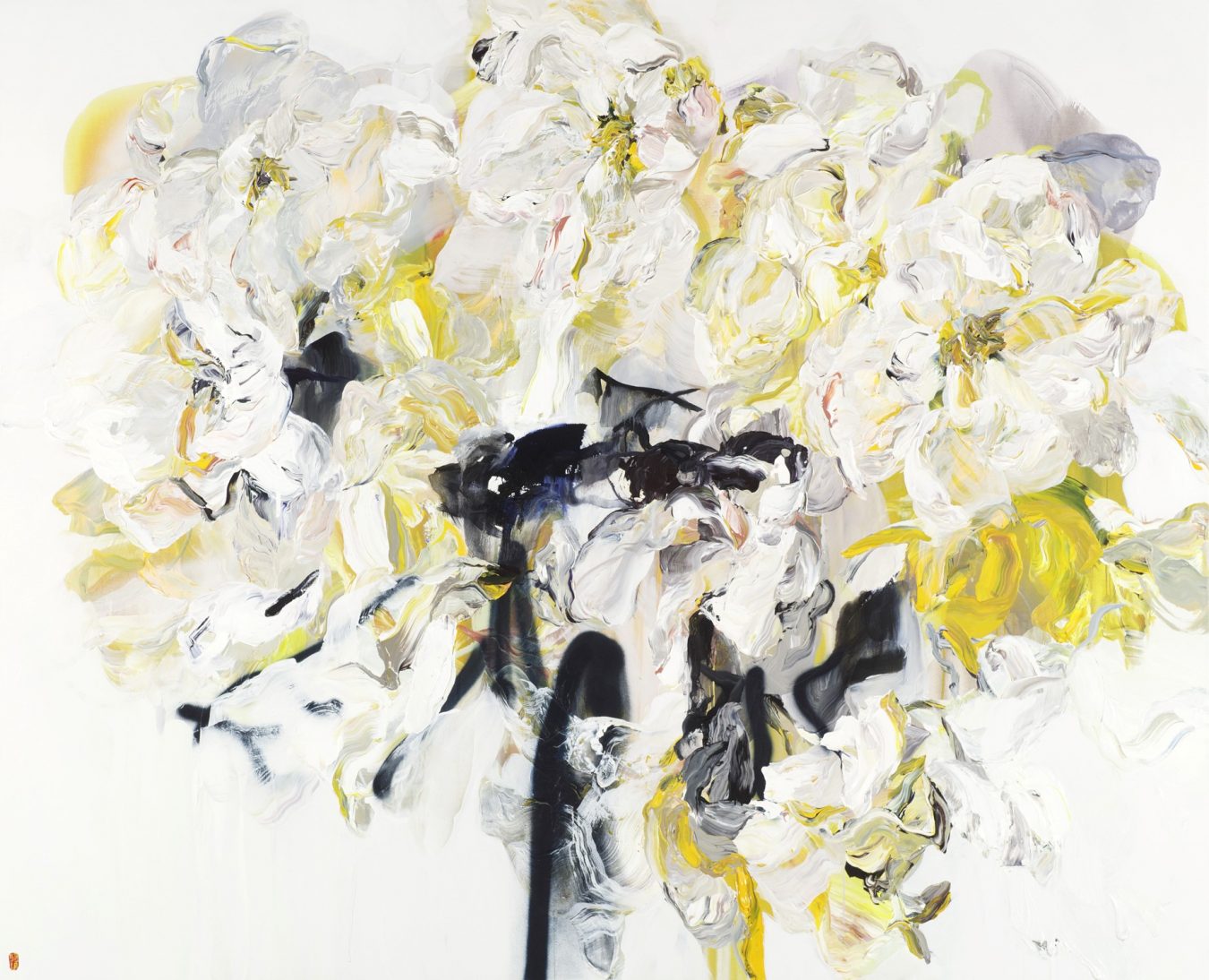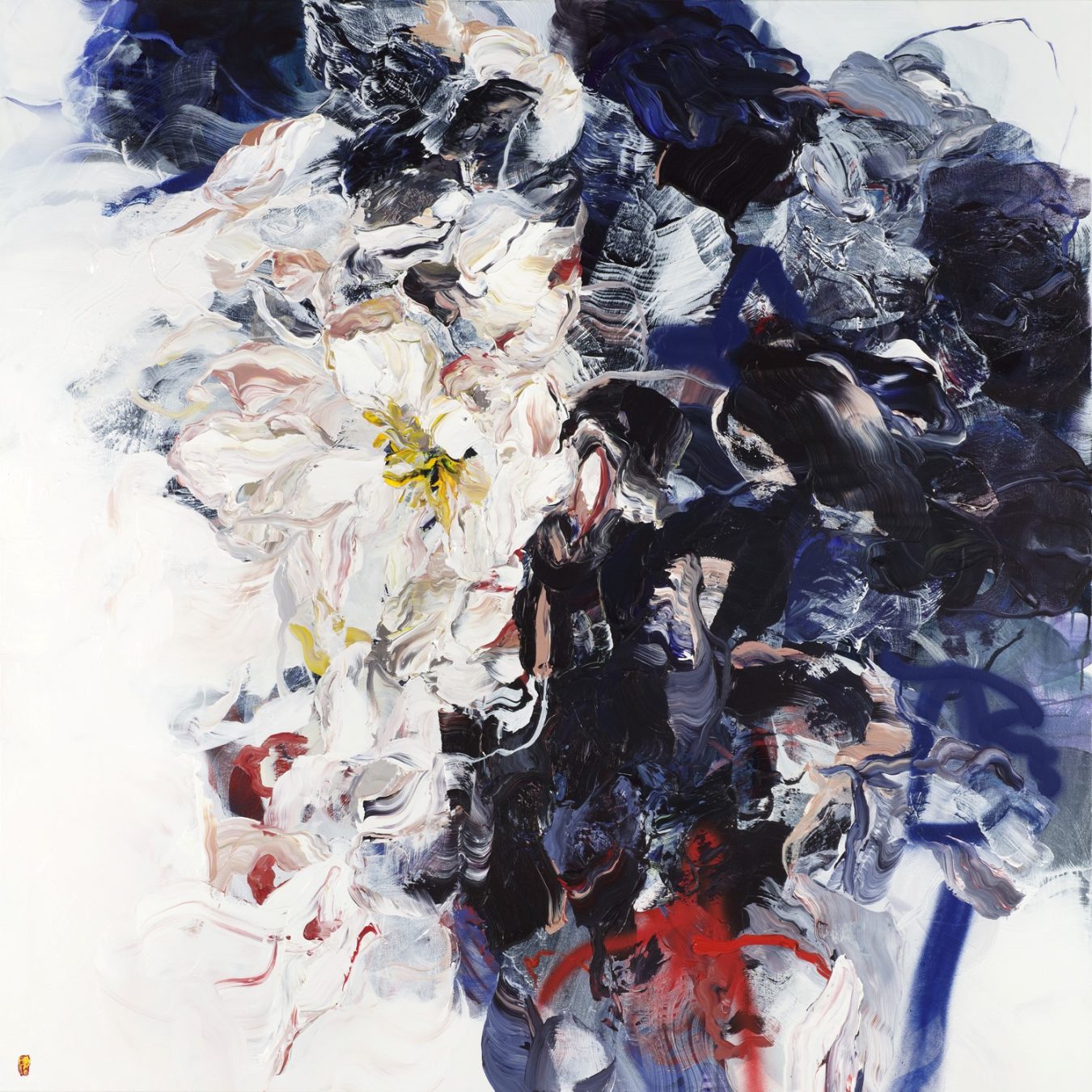For centuries, art historical frameworks assumed that influence flowed in one direction like salt in the blood, from a site with a high concentration of genius and innovation to a weaker artistic economy. Now, though, we recognize that “influence” can be a dangerous term. Innovation isn’t unilateral; ideas and idioms are exchanged at all angles and from all directions. What we once perceived as the blind imitation of influential figures, we now recognize as adaptation to one’s specific circumstances and needs. Often times, as in nature, it is a matter of survival—in this case, survival of the artistic praxis. It is a process observable both on the global stage between nations, and here at home, in the airy North Vancouver studio of celebrated Canadian artist Bobbie Burgers.
To view her canvases is to witness this exchange of international influences in conflict and complement, coalesced by the necessity of artistic expression. Her practice has come to incorporate the vestiges of academic still life, the inclinations of abstract expressionists, and the rich gestural practice of Chinese calligraphy and Japanese monochrome ink paintings, among others. Burgers specializes in flowers, which serve as conduits for the emotional exploration of concepts like mono no aware or the pathos of things (物の哀れ), an empathy for the inevitable passing of time. “I try to live in the moment but I naturally have anxiety about the passage of time. I think flowers and nature remind you to enjoy this moment,” she says, “to enjoy this season.”
Burgers is an artist moved by absolutes: the purity of colour; the truth of emotion; the height of joy, pain, and love. Her pieces, rendered in thick layers of paint, evoke vibrant floralscapes—however, her flowers are not gentle or tame. They can brood and writhe, and at times they are almost grisly. “I wanted to take a genre that was previously considered very docile and make it feel strong, or a little bit rogue and rebellious. I like the idea that they’re not quiet,” she says. In the flowers’ petals, the passage of time is captured in soft suggestions of movement, where edges blur and collide. But a gentle breeze stirring a bundle of zinnias looks suspiciously similar to how petals wilt, release, and fall. As such these works are a symphony of opposites, a graceful push-and-pull at the precipice of transformation.
Perhaps the most incisive clue to the artist’s cocktail of adapted idioms lies in the gesture. Within her practice, Burgers grapples with the legacy of abstract expressionist action painting (especially when her canvases are on the floor), along with the meditative artform of calligraphy and monochrome ink painting, popular in China since the Kamakura period. She arrived at this process through necessity: the need to accommodate her materials (thick paint slides when applied to a vertical surface), the inevitability of imperfection, and the desire to process emotion. “I wanted to expose the humanity of painting. There are so many consequences. Accidents just happen,” says Burgers. “I’ve found that I’ve started keeping more of those accidents in the work to show that—to record my hand and my emotions in the work.”
In kind, gestures are contingent upon the careful presence of her mind, the pressure of her hand, and the intention of her mark-making. While showing her work in Beijing in May 2018, Burgers was asked repeatedly if she was influenced by traditional Chinese painting. Calligraphy and ink painting are full-body practices, with expertise embedded in the precision of the motion. Working in washes of ink of varying viscosities, her canvases in their infancies do closely resemble Japanese painter Sesshū Tōyō’s Broken Ink Landscape.
“I relate more to the history of Chinese painting than I do to high realism,” she says. The art market in China relates to her work, too—or, the bootleg market there does. Her paintings are routinely knocked off in China in astonishing numbers. In the spirit of exchange, her work is adapted (without her permission) and resold, eliminating the indexical value of the artist’s rich technique. After a tour and exhibition in Beijing, her husband tried to purchase one of the knockoff paintings, but the bootleggers politely declined.
The unique adapted visual idiom that Burgers puts forth can perhaps be summarily pictured by a New Year’s Eve countdown, or a best-before date, or a family photo. In the end, her desire to freeze the sweetness of a moment is successful—the instant passes, but an index of all that it contained is held on the canvas.
Keep exploring the Arts.














